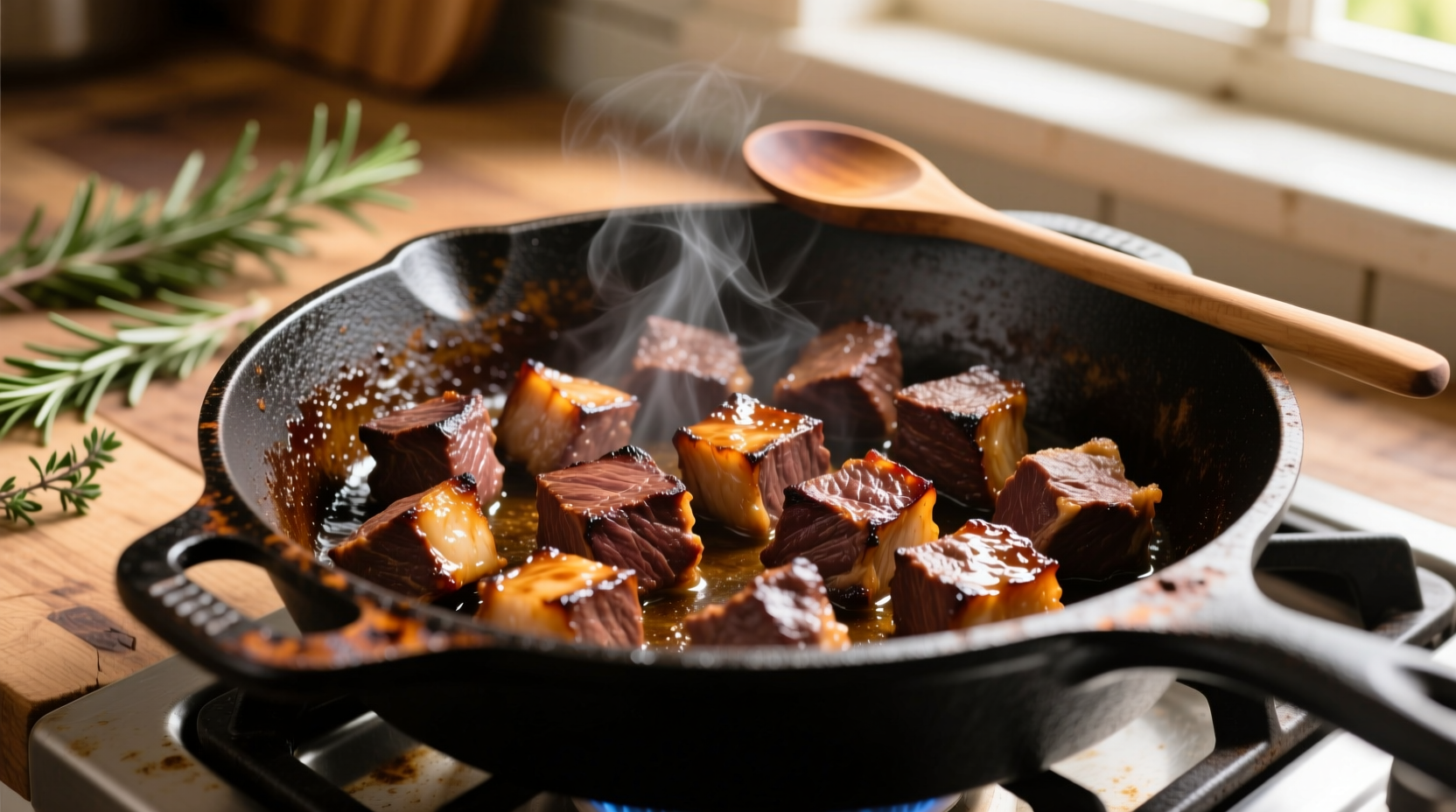Nothing beats the rich, comforting aroma of beef stew simmering on your stove. This classic dish transforms humble ingredients into culinary magic when you master the proper technique. Whether you're a weeknight cooking novice or an experienced home chef, this guide delivers the precise methods professional cooks use to create perfectly tender, flavorful beef stew every time—no slow cooker required.
Why Stovetop Beef Stew Beats Other Methods
While slow cookers offer convenience, stovetop preparation gives you complete control over the critical browning process and simmering temperature. The USDA Food Safety and Inspection Service confirms that proper browning at high heat (300-350°F) creates the Maillard reaction, which develops complex flavor compounds that slow cooking alone cannot achieve. This controlled environment prevents the common mistake of boiling instead of simmering, which makes meat tough rather than tender.
Essential Equipment Checklist
Your equipment choices significantly impact results. Professional chefs recommend:
- 6-8 quart heavy-bottomed Dutch oven (enameled cast iron preferred)
- Meat thermometer for precise temperature monitoring
- Wooden spoon for stirring without scratching
- Slotted spoon for safely removing browned meat
- Mesh strainer for degreasing broth
| Beef Cut | Recommended Cooking Time | Flavor Profile |
|---|---|---|
| Chuck Roast | 1.5-2 hours | Richest flavor, ideal marbling |
| Round Steak | 2-2.5 hours | Leaner, requires careful monitoring |
| Brisket | 2.5-3 hours | Intense beefiness, higher fat content |
The Critical Browning Process: Where Most Home Cooks Fail
Browning isn't just about color—it's a chemical transformation. When properly executed at 350°F, the Maillard reaction creates hundreds of flavor compounds that form the foundation of your stew's taste profile. Here's how to do it right:
- Dry meat thoroughly with paper towels (moisture prevents browning)
- Heat oil until shimmering but not smoking (test with breadcrumb)
- Cook in single-layer batches without crowding the pot
- Wait 3-4 minutes before moving meat to develop proper crust
- Remove browned pieces immediately to prevent overcooking
Skipping this step or overcrowding the pot leads to gray, boiled-tasting meat rather than richly flavored stew. The American Meat Science Association confirms that proper browning increases savory flavor compounds by up to 300% compared to unseared meat.

Building Flavor Layers: The Professional Approach
After browning, build complexity through strategic additions:
- Deglaze properly: Use 1 cup red wine or broth to scrape up flavorful browned bits (fond)
- Aromatics timing: Add onions and garlic after deglazing, cooking 5 minutes until translucent
- Tomato element: Stir in 2 tbsp tomato paste and cook 2 minutes to deepen flavor
- Herb incorporation: Bundle thyme, rosemary, and bay leaves in cheesecloth for easy removal
Simmering to Perfection: Temperature Control Secrets
This is where stove-top cooking shines over other methods. Maintain a gentle simmer at 180-205°F—never a rolling boil. The National Center for Home Food Preservation confirms that temperatures above 212°F cause muscle fibers to contract excessively, squeezing out moisture and creating tough meat.
Follow these timing guidelines based on your cut:
- Chuck roast: 1.5-2 hours
- Round steak: 2-2.5 hours
- Brisket: 2.5-3 hours
Test for doneness by piercing with a fork—it should slide in with almost no resistance. The internal temperature should reach 190-205°F for optimal tenderness.
Common Mistakes and How to Fix Them
Even experienced cooks encounter issues. Here's how to troubleshoot:
- Tough meat: Return to simmer for additional 30-minute increments until tender
- Watery stew: Remove meat and vegetables, then reduce liquid by 50% before returning
- Over-salted: Add raw potato chunks to absorb excess salt, then remove before serving
- Bland flavor: Stir in 1 tsp Worcestershire sauce and 1 tbsp soy sauce for umami boost
Storage and Reheating for Maximum Flavor
Beef stew actually improves overnight as flavors meld. Store in airtight containers for up to 4 days in the refrigerator or freeze for 3 months. When reheating:
- Gently warm on stove over low heat (do not boil)
- Add splashes of broth if liquid has reduced
- Stir in fresh herbs just before serving











 浙公网安备
33010002000092号
浙公网安备
33010002000092号 浙B2-20120091-4
浙B2-20120091-4